Alex Kanevsky Interview with Neil Plotkin
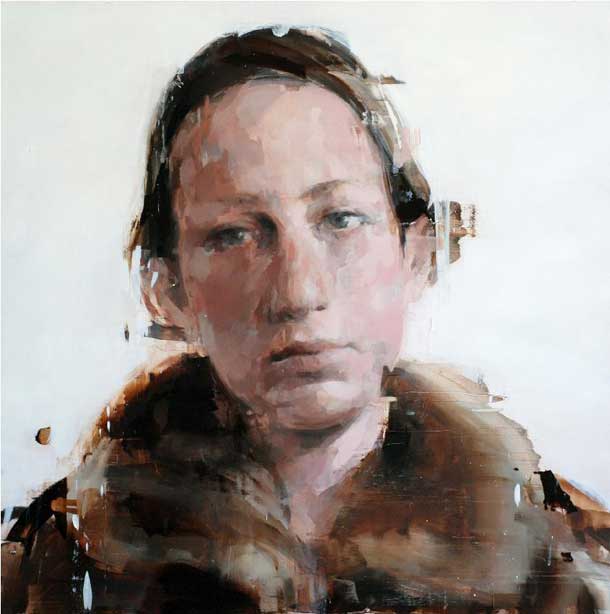
Alex Kanevsky J.F.H. 48″ x 48″, oil on board, 2011
click here for a larger view
Many readers are familiar with Alex Kanevsky’s work but perhaps not all of his details. The internet offers a great deal of information about Mr. Kanevsky but unfortunately much of it is, if not false, not exactly accurate either. I was recently fortunate enough to visit Mr. Kavnevsky in his studio and I got the sense from him that this situation didn’t bother him, and that perhaps he even found it amusing.
I asked him about being from Lithuania and his studies there. I had assumed he was an ethnic Russian who grew up in Lithuania or was from near Kalingrad or something to that effect (This will probably only add to the general confusion about his background). He quickly corrected me and explained that he was from the provinces in Russia and studied in Lithuania. He then told a story about an article that had been written about him in France recently. The article seemed to only have one fact that was correct. Mr. Kanevsky seemed resigned to the errors. He said that he felt that these facts about him end up being similar to his drawings. The information isn’t always correct but when you put everything together it tells a sort of truth.
The details that I know to be true are the following: Alex Kanevsky is a Philadelphia, Pennsylvania based painter who teaches at the Pennsylvania Academy of Fine Arts. He shows at J. Cacciola Gallery and Dolby Chadwick Gallery, and had a show in December at J. Cacciola Gallery. He will also have a show in Milan, Italy at the Barbara Frigerio Gallery in November of this year.
I want to thank Mr. Kanevsky very much for opening his studio to me and being willing to take the time to answer my questions.
Neil Plotkin: You grew up in Russia and have lived as an adult in the US; you studied art in both Lithuania and Philadelphia in – by your own description – quite different educational environments: do you feel that you are more tied to the traditions and lineages of Philadelphia than Russia/Lithuania/Europe?
Alex Kanevsky: I was fortunate to depart Lithuania and to arrive to the US at the time when I was already well familiar with the European /Eastern European traditions and somewhat educated in that direction, but not convinced yet that I wanted to go in that direction myself. So in the US, I found myself with one foot in each tradition, both feet not too firmly planted. Having been deprived in this way of strong authority figures, I mostly had to fill the vacuum with my own inventions. As the result, I don’t feel strongly tied to either tradition and certainly do not feel myself to be a part of any lineage. It is a rather confusing mix of influences that I never tried to sort out.
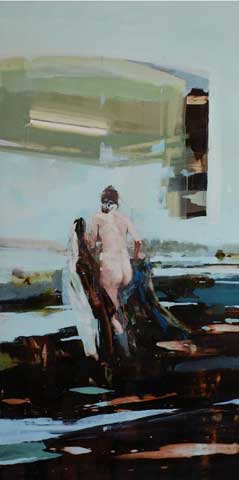
Kitchen Landscape 48″ x 24″, oil on wood, 2011
NP: You studied math previous to studying art. In many ways the two are very related. In practice have these two aspects of your education intertwined in any way?
AK: Mathematics for me is related to art in many ways. Most importantly, it is because much of what it deals with cannot be expressed or even approximately described in words. Getting used to being comfortable in that situation is a good training for an artist. I understand this situation as being more liberating than limiting. That led to an additional, unintended conclusion that artists statements are not possible and any attempts to write one lead to confusion and misinformation.
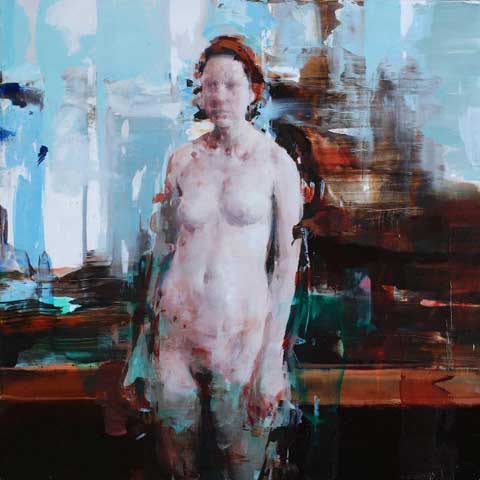
R.W. 24″ x 24″, oil on wood, 2011
NP: As we discussed previously, it seems that your work underwent a rapid evolution about 10 years ago, becoming more fluid and comfortable. Can you talk about that transition and how your thinking changed at that time?
AK: A little more than 10 years ago I won a Pew Grant that allowed me to do nothing but paint for almost two years. Doing that, I discovered continuity. Being able to come back in the morning to the painting I left last night, the memory of the work still fresh, and the sense of flow uninterrupted. It made a big difference to me, probably because I am not a fast painter, so I can never start and finish anything in one day. Usually, the paintings stay with me for weeks or months. The continuity was addictive. It gave me the taste of my personal right modus operandi. When the grant money run out, I realized that I was now committed to this kind of life and would rather be very poor, but paint every day than return to the part-time world. For a while that is what I did, and later the paintings began to sell in the galleries, so I was able to go to my studio and paint every day ever since. That was my personal mini-revolution: the understanding of how I need to function as an artist and the commitment to do just that regardless of the circumstances.
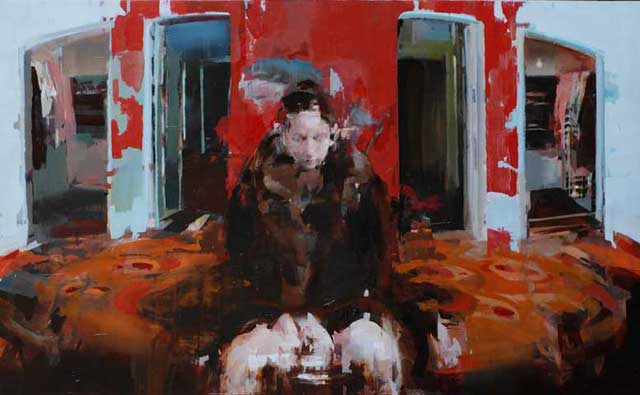
J.F.H. with Four Doors, 36” x 58”, oil on wood, 2011
NP: Can you describe the perfect studio for you?
AK: The perfect studio is not very important. I think one should not become too attached to buildings and geographical locations even if one works happily there. It is a good idea to move from time to time to shake up the old paradigm. Some things are important to a painter: good constant, natural sunlight. Enough space to walk away from paintings. Otherwise I am more clear on what I don’t want: big multi-studio buildings full of various artists.
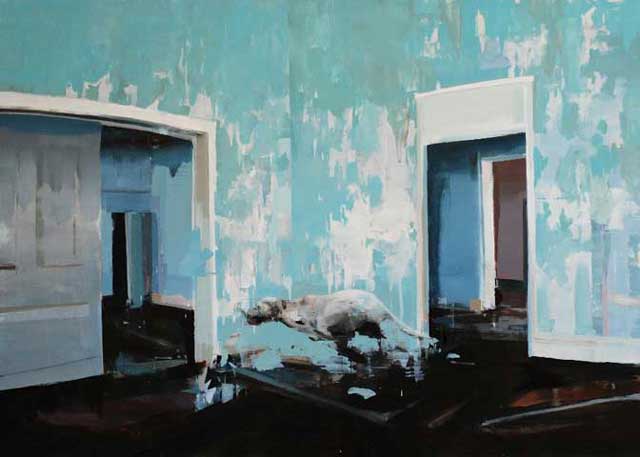
Blue Room with Running Dog, 55” x 77”, oil on wood, 2011
NP: You teach at PAFA one day a week. You have said that one day a week is the ideal amount of teaching, what does it bring to you/your artistic practice?
AK: It keeps me honest and on my toes. We deal with the same painting issues in this class that I face myself every day in my studio. The class forces me to verbalize these issues and find the ways to express them and the solutions clearly. I would not be naturally inclined to do that if it were not for the students. It is clearly an adversarial situation both for them and (less evidently) for me. At the end we all benefit from more clarity.
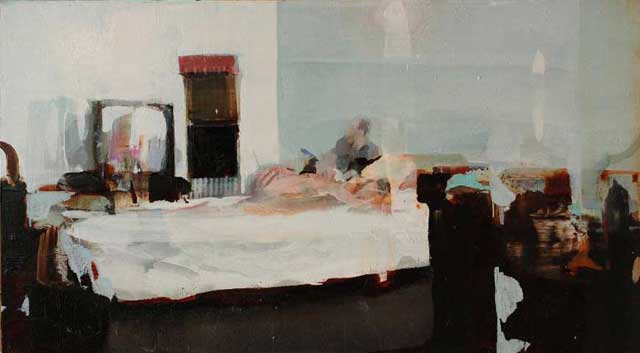
Morning Television 8.5″ x 16″, oil on wood
NP: You’re considered by many artists and critics to be extremely at ease in your drawing and painting skills. But you often talk about how difficult you find painting. What are you struggling with right now?
AK: Well, it is the road with no end. As your skills inevitably get better with time, you expect more from yourself. Skills in themselves, beyond certain serviceable level, don’t matter very much, but I always want to function at the limit of my current abilities to keep things exciting. There should always be danger of painting crushing and burning. I want painting to be difficult so that there is always room for failure. Working this way has an unintended consequence of improving the skills.
The struggle then has nothing to do with the technical difficulties and the level of skills. The struggle is mostly to find clarity.
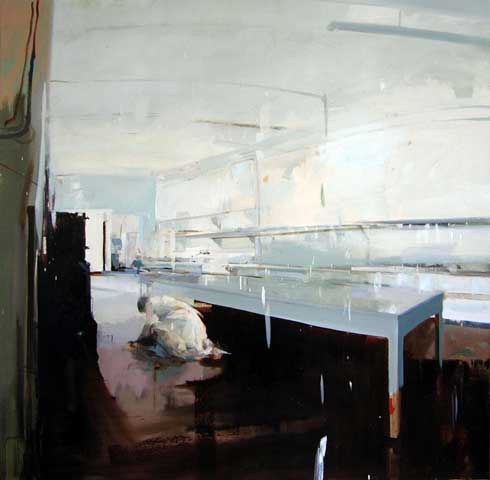
Annunciation 66 x 66, oil on linen, 2007
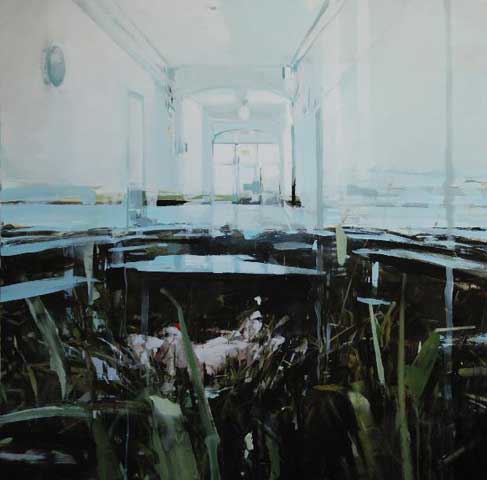
Chelsea Hotel Landscape?48″ x 48″, oil on wood, 2011
NP: Titles can change work entirely and in the title of paintings like The Annunciation and Chelsea Hotel Landscape or the titles of bodies of work, like Proserpine, Heroes and Animals, Parlor Games etc, it seems that there could be a narrative to the work. Does narration play a role in your work and if so, what role does the narrative play in development of the work?
AK: There are no linear narratives in this work, despite of what the titles might suggest. There are absurd pseudo-narratives in the paintings that you mentioned. They are used as working tools: mostly to accomplish certain precise emotional climate rather than to tell a story. If you think of stories or memories from your own life, they are important to you as triggers that allow you to relive the meaning of the events, to recapture your own emotional response to them. I use, combine and fracture these “narratives” for the same reason. It is more interesting to trigger than to describe. I don’t mind it if these titles or the implied stories mislead a viewer to some extent. To make a painting her/his own, a viewer will have to accept the ambiguity, confusion and search for clarity that were the conditions of its arrival.
Large Nude with Several Pictures of Herself 35.75″ x 59.5″, oil on wood, 2011
NP: In your Progress Sequence, you’ve described your process of painting as being a bit like “wandering in the dark with uncertain goals. Not aimless, but not exactly purposeful.” If that’s the case, how do you decide that a painting is finished?
AK: When I am happy with it. When all the potential improvements will only do harm. When any roughness and awkwardness left in it ceases being a shortcoming and becomes a vital part of composition.
Or it is irretrievably lost (finished in a different way).
Paintings do let us know when to leave them alone. Artists often overlook these signals, being so focused on imposing their will. I don’t think of painting as something I do to a canvas. To me it is a complicated relationship of equals. A form of conflict. When we reach some sort of agreement that makes everyone satisfied it is the good time to leave it alone.
NP: As drawing can be so different from painting, do you feel that you have different mentors in drawing than in painting?
AK: There were different artists I looked at. Drawing is very specific, very abstracted form of communication. Drawing is to painting what a game of bridge is to life, to use a somewhat convoluted analogy. Anyway, I looked at Balthus, Raphael, Giacometti, Auerbach, Andy Wyeth, Antonio Lopez, Seurat, Joseph Beuys, Cy Twombley, Adolph Menzel, Euan Uglow for drawings – among many others.
NP: When I visited your studio, you mentioned that you had started to draw again a couple of years ago. I understood this to mean that it had been several years since you drew on a regular basis. I’m wondering what your reasons were to get back to drawing.
AK: Curiosity. To see what’s there. They fascinate me now. Looking at a good drawing is like talking to a completely insane person, who nevertheless says some beautiful and profound things. Naturally I wanted to try that myself.
And seeing Lopez Garcia show in Boston and Michael Rossman’s here in Philadelphia and Sangram Majumdar in NY.
NP: When we talked, you explained that when you draw your models, after breaks you ask them to get back into position but don’t require that they get back into the exact position. Could you describe this process and how you came about this approach?
AK: After not drawing for a good 15 years (why draw when you can paint?), I wanted to try again fresh. A model came to the studio and we attempted a pencil drawing on the back of some big old watercolor that was around. I was out of practice in trying to express volumes with lines. In fact it seemed like a rather bizarre idea. Things were pretty rough for a while. I couldn’t find one shoulder, and since I did not have an eraser in the studio, I had to re-draw it over and over. Eventually, it was in the right place, along with the collection of the wrong lines surrounding the good one. Later, as I looked at it, I realized that the search for the right line that went on, or rather the agglomeration of the wrong lines, implying the existence of the right line somewhere among them, was the most interesting thing about that drawing. It connected the drawing in my mind with my own commutative wave paintings that I did in Ireland a little earlier. It also reminded me of someone’s project I have seen once. The artist photographically superimposed 10 years of the Playboy centerfolds, and the resulting image surprisingly looked like a beautiful abstract Titian painting of a flesh cloud.
Now, that I have been drawing every week for a couple of years, I have become better at it, I don’t make enough mistakes.
So, in order to give myself some space to fail, I ask the models not to be too precise in keeping the pose, or sometimes even to move intentionally. These are implied rather than realized drawings.
NP: Your drawing work is completely linear whereas the painting is done in broad color swaths and your prints are done in thin layers piled up. Can you talk about how the different approaches in each medium influence the other media?
AK: I am not sure they do. In my mind they all exist independently. That is their attraction for me. I use every one of these media the only way that seems right to me. For example, if I want to work tonally, why would I draw? Painting seems more natural for that. And the printmaking is actually collaboration with Erika Greenberg Schneider. My part of it resembles watercolor mere than anything else. I don’t have anything to do with the actual printmaking.
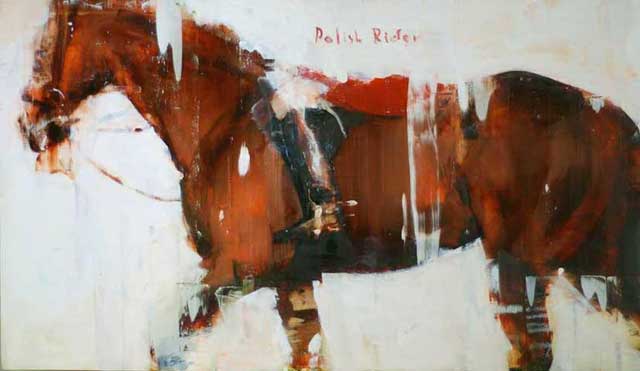
Polish Rider 28″ x 48″, oil on board
NP: When I look at some of your drawings and Spinning Figure, in particular, I am reminded of Tony Cragg’s sculptures. One of the first paintings of a horse in recent years was named The Polish Rider – I am assuming that this is a reference to the Rembrandt in the Frick Collection. And of course there’s the painting Nude Descending a Staircase. Are you creating work with the idea of a dialogue with other artists and artworks?
AK: I do. The connection with Tony Craig sculpture never occurred to me, but you are probably right about that. I feel connected to what so many other artists did. We are not in vacuum. The dialog really exists. I don’t think it is some sort of linear progression that art historians are so fond of. It is more like a complex fascinating conversation with many people, dead and alive spanning several hundreds of years. It is a wonderful feeling to be able to talk with Rembrandt, and there is no other way to do that for me.
More interviews with Alex Kanevsky:
http://www.vivianite.net/alex-kanevsky
http://rtspot.wordpress.com/2009/01/08/alex-kanevsky/

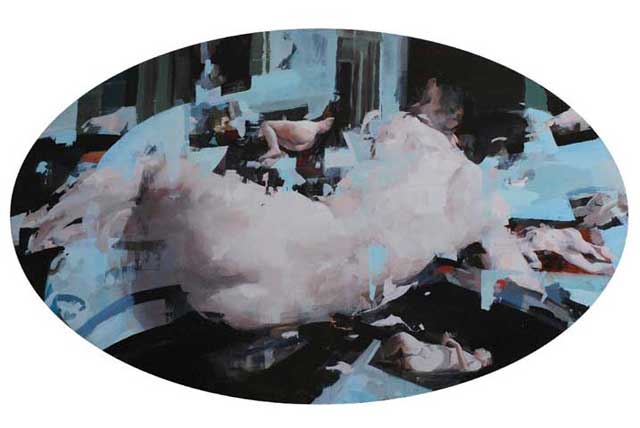
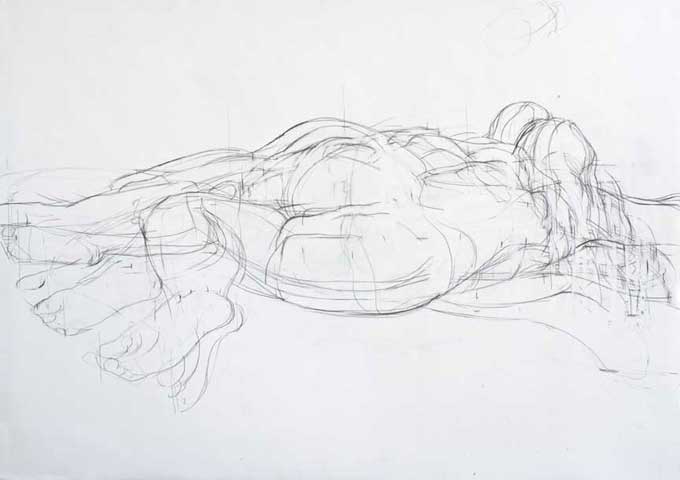


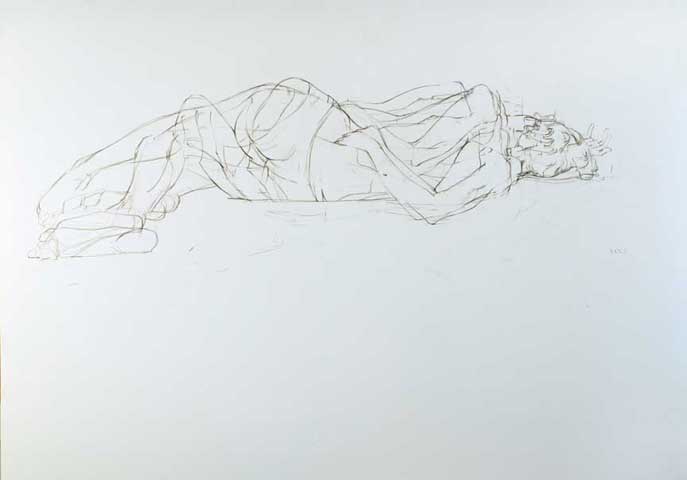
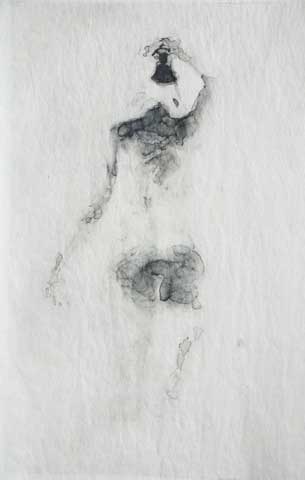
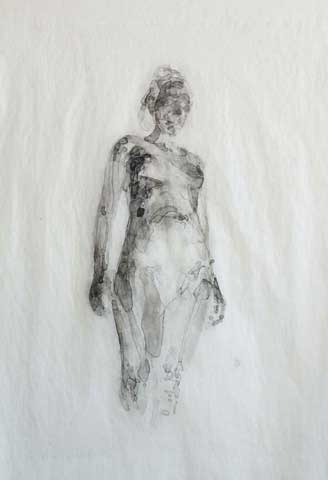
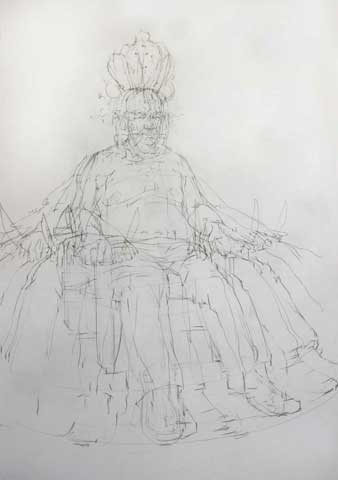
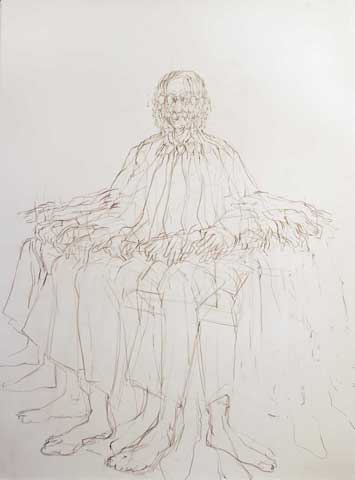

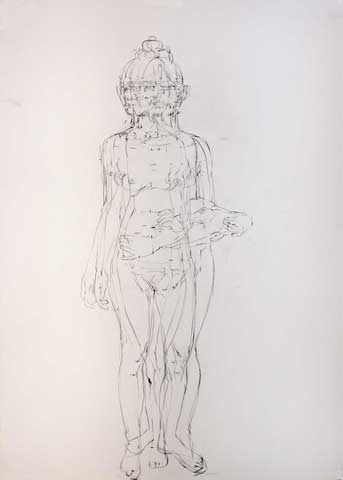




Interesting. I`ll read the article again, verey slowly. Since the language is foreign to me. But great to read.
Great interview, thanks for posting it.
I love your paintings.Your style is specialy.Good luck
Alex is a rare talent. I find his work reflective yet energizing. Wonderful work.
Great interview, the most beautiful and mesmerizing paintings. Great to see the figure drawing process too.
Alex Kanevsky’s paintings communicate his visual language so eloquently – each brush stroke hits on the right note – the images are universal, it is contemporary painting at its best.
i am in a trance when i see his work.
Thanks Heddy – I didnt know about him – love the work and the interview – you have the skills of artist & lawyer, congratulations
Great article and such a beautiful body of work. Thank you!
Fantastic! Thank you.
This is great Neil; I’ve admired Mr. Kanevsky’s work for awhile now. The paintings seem to bring to mind a certain ‘cinematic’ quality, for lack of a better word. Perhaps it the implied sense of motion or re-orienting of the subject in space described in his drawings. The color too…those inky blacks and high chroma reds and blues. I was wondering if he mentioned film or video during your conversations…perhaps it just goes along with his comments on the photograph, however. What excellent paint handling and surface control…awesome.
Hi Frank,
Alex talked a little bit about his use of photographs. If I remember correctly, he said that he uses them more for reference of things that change too much or quickly. like the crowd scenes (and I assume the running dog). The figure paintings are always done from life. Of course I might be adding to the pile of misinformation about him. The spaces I think might contribute to that feel. His studio is in an old Catholic school and so he has access to these wonderful spaces that help create an institutional feel.
A splendid interview. Especially liked his disclosure of a 15 year hiatus from serious drawing and his return.
Another fascinating interview with the most amazing artist. Thank you!!!!!!!!!!
Good read. Good work. Thanks Neil and Alex.
I just am so inspired with everything I’ve ever seen of Alex’s work. Don’t think I’ve ever read about his background.
His work, and more work, and evolution is just what I am involved with in my own work. In oil. Not my pastel paintings.
Thank you so much and send my regards to Mr. Kanevsky.
Elizabeth Sandia, Santa Fe, NM
Alex Kanevsky is a fabulous painter. What a rare treat it is to have him put some of what he does into words. His gifts are not merely technical. He has extradinary vision. I love the way he fuses classical forms and classical ideas of beauty with the disjointed angularities of suggested abstraction. For me, he expresses perfectly the fracturing of past certitudes. I see his longing for the old beauties floating along on what he knows about time and the imperfections of memory. But of course, he puts it all better himself, and the Russian accent, somehow audible in the lines above, embellishes the mystery of his genius.
Great interview.
There was a painter very active in the l940s, 50s, and later named Balcomb Greene who treated the
nude in a similar manner as Kanevsky. Use of spacial planes, paint application, lyrical amd even,
to me, a little nostalgic. His work is like trying to remember a dream you had and tried to replicate
in your studio.
Thank you Lydia for that painter to Balcomb Greene. I have never seen his work before, but find it very interesting. Apparently there is some of his work in the PAFA collection here in Philadelphia. It will be very interesting to see it in flesh.
Congratulation! his works are incredible
This is beautiful work, Alex. Very honest and responsive; to the rectangle, to the paint, to human vision.
So loved the answers Alex gave about painting. As an artist I find questions about my work a bit tiresome at times and was grateful for ways to express myself better to others next time thanks to Alex. Love his work. The freedom. Have been looking at Sargent’s work and thinking of loosening up the lines a little. Alex does that to another extreme and I love that. 😀
I enjoyed this interview not only for the directness of Alex’s answers but also for the knowledge that you, the interviewer, brought into this event. I find Alex’s work fascinating and interesting. He has such a beautiful sense of color as well as composition and the ability to ‘say’ what he needs to say without needing to fill in all those details! There’s breathing room… I look forward to reading more interviews! Thanks you!
A very inspiring interview. I especially like this quote given in another interview, “Build up your self esteem to the level that might seem unwarranted. This will help you ignore both positive and negative responses to your paintings. Both are usually misguided, since they come from the outside. Be your most severe and devastating critic, while never doubting that you are the best thing since sliced bread.”